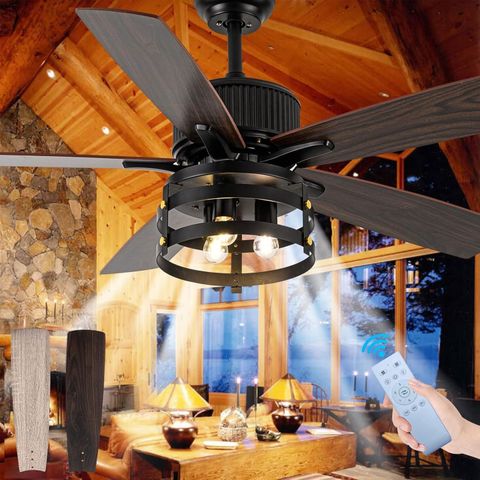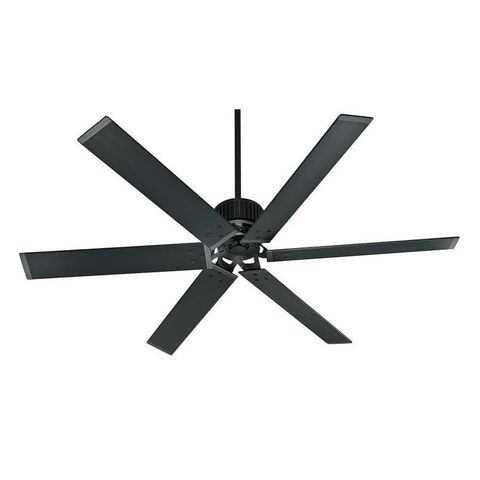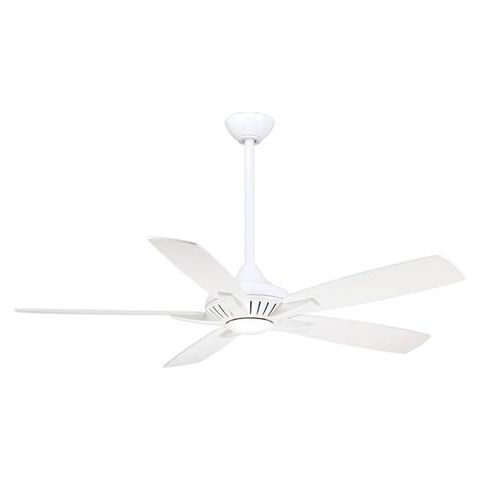Imagine walking into a massive warehouse space – the kind where forklifts rumble between towering shelves, and the air feels thick with heat and humidity. Now picture how different that space would feel if you had the right industrial ceiling fan installed. This isn’t just about keeping things cool. It’s about creating a working environment that’s efficient, comfortable, and safe for everyone inside.
When it comes to warehouse operations, ventilation often takes a backseat to more pressing concerns like inventory management and logistics. But let’s be honest – no one wants to work in a stuffy, overheated space. Industrial ceiling fans aren’t just luxury items they’re essential infrastructure for modern warehouses. They can dramatically improve air quality, reduce energy costs, and even enhance worker productivity. The challenge lies in choosing the right fan for your specific warehouse needs. With dozens of options available, from basic models to high-tech solutions, making the wrong choice can lead to wasted resources and uncomfortable working conditions.
Understanding Warehouse Ventilation Needs
Every warehouse has unique requirements based on its size, layout, and operational demands. Consider the physical characteristics first – how tall are your ceilings? What’s the typical temperature range during peak hours? Are there heat-generating machines or processes that need extra attention? These factors directly impact fan selection. A warehouse with 20-foot ceilings requires different considerations than one with 12-foot ceilings. The airflow pattern needs to reach all areas effectively, which means understanding how air moves through your space. Think about it like trying to cool down a room with a window fan – you wouldn’t just place it anywhere. You’d position it strategically to get the best results. Similarly, industrial fans must be placed and sized correctly to maximize their effectiveness.
Key Fan Specifications to Evaluate
Let’s break down what matters most when comparing industrial ceiling fans. Blade diameter is crucial – larger blades move more air but require more power. For warehouse applications, you’ll typically want fans ranging from 48 inches to 96 inches in diameter. Motor type also plays a significant role. Some fans use direct-drive motors while others rely on belt drives. Direct-drive fans tend to be quieter and require less maintenance. Airflow capacity, measured in cubic feet per minute (CFM), tells you how much air the fan can move. Higher CFM ratings mean better performance in large open spaces. Energy efficiency matters too, especially if you’re running fans continuously. Look for fans with ENERGY STAR certification or equivalent standards for optimal performance.
Size Matters: Matching Fans to Your Space
One of the most common mistakes in warehouse fan installation is mismatching the fan size to the space dimensions. A small fan won’t provide adequate airflow in a large facility, while oversized fans can create uneven air distribution. Calculate your warehouse’s square footage and ceiling height to determine appropriate fan size. For example, a 20,000 square foot space with 15-foot ceilings might need fans with 60-inch blades, whereas a 10,000 square foot area with 12-foot ceilings could work well with 48-inch fans. Remember that the fan blades should extend at least 12 inches from the walls to avoid turbulence. Also consider the distance between support beams and structural elements that might affect mounting locations. The goal is creating uniform airflow throughout the entire space.
Installation Considerations and Mounting Options
Installing industrial ceiling fans properly makes all the difference in performance and safety. The mounting system must be strong enough to handle the fan’s weight and movement forces. Most warehouse fans come with various mounting options including pendant systems, wall brackets, or ceiling truss mounts. Choose the method that works best with your existing structure. Don’t forget about electrical requirements – industrial fans often need dedicated circuits and proper wiring. Some installations require professional electricians to ensure compliance with local codes. Access for maintenance is another important factor. Will technicians be able to easily service the fans? Are there enough clear spaces around the installation points? These practical considerations can save you money and headaches down the road.
Energy Efficiency and Cost Considerations
Industrial fans consume significant amounts of electricity, so efficiency shouldn’t be overlooked. Modern fans feature variable speed controls that allow you to adjust airflow based on seasonal needs or workload changes. This flexibility can result in substantial energy savings over time. LED lighting integration is another feature worth considering. Many fans now come with built-in lighting that can replace traditional overhead fixtures, reducing both energy consumption and maintenance costs. When calculating total costs, factor in not just purchase price but also ongoing energy usage and maintenance requirements. A slightly more expensive fan with better efficiency might actually save money in the long run. Compare the lifetime cost of ownership rather than just initial investment.
Maintenance and Longevity Factors
Industrial fans in warehouse environments face harsh conditions that can affect their lifespan. Regular maintenance is essential for continued performance and safety. Dust accumulation, vibration, and exposure to chemicals or moisture all take their toll on equipment. Schedule routine inspections to check for loose bolts, worn bearings, and blade condition. Most manufacturers recommend annual maintenance for continuous operation facilities. Consider the availability of replacement parts when making your selection. You don’t want to invest in a fan that will become obsolete quickly or whose parts are difficult to source. Quality materials and construction matter enormously. Stainless steel components perform better in corrosive environments, while aluminum offers lighter weight options. The right balance of durability and functionality will serve you well for years.
Choosing the right industrial ceiling fan for your warehouse involves careful consideration of multiple factors, from space dimensions to energy efficiency and maintenance requirements. The investment you make today in proper ventilation can pay dividends in improved worker comfort, reduced energy costs, and enhanced operational efficiency. Don’t let the complexity of the decision overwhelm you. Start by identifying your core needs and working with experienced professionals who understand both the technical aspects and practical realities of warehouse environments. Remember, the best fan isn’t always the most expensive one – it’s the one that meets your specific requirements while providing reliable, long-term performance. Think of it as investing in your workspace’s future, where every airflow improvement contributes to better productivity and safer working conditions for everyone involved.














